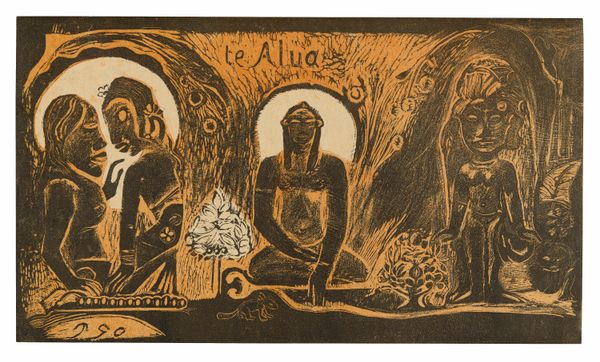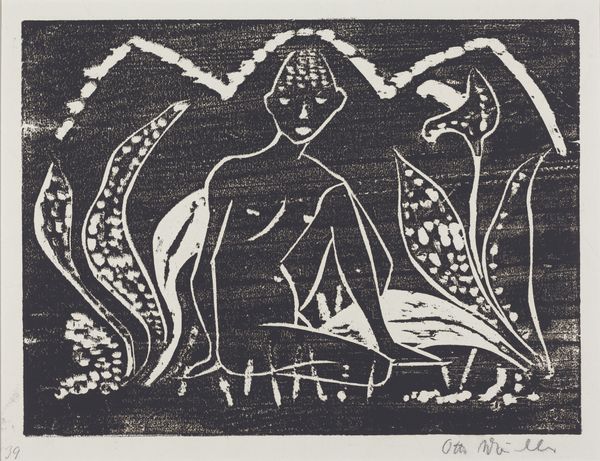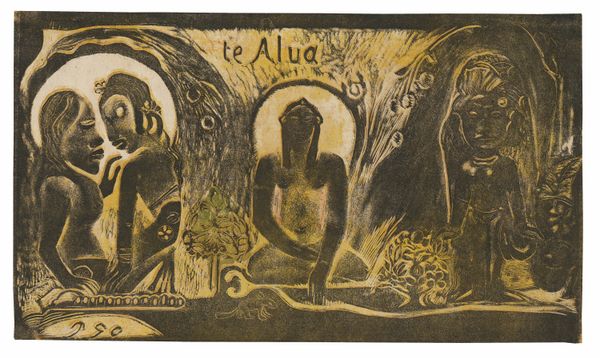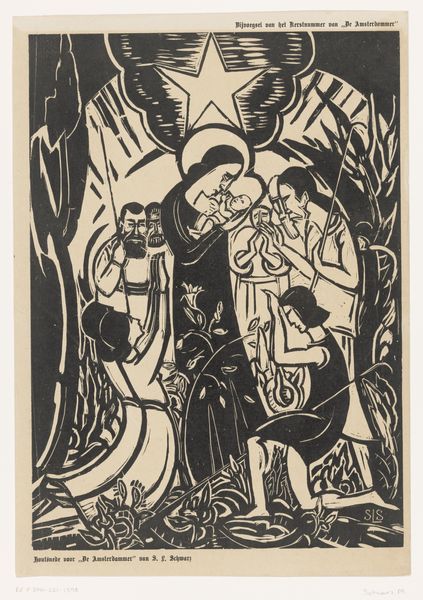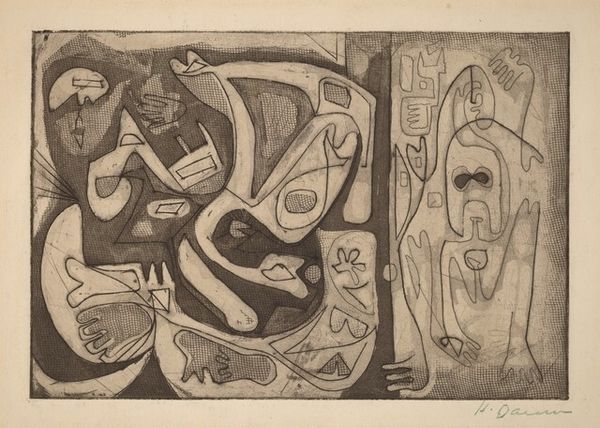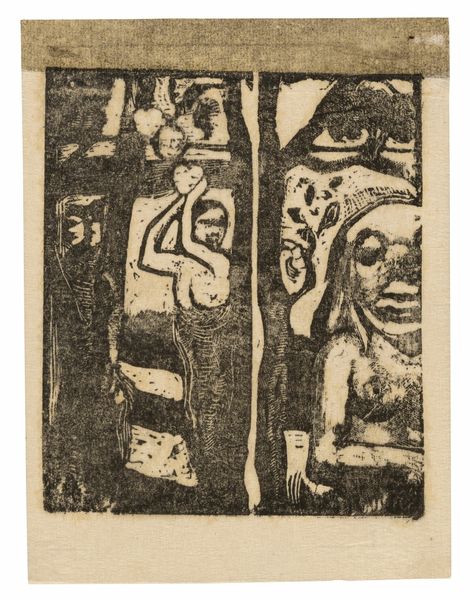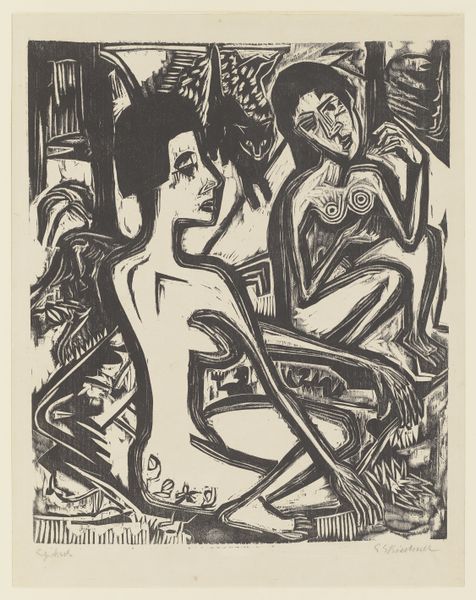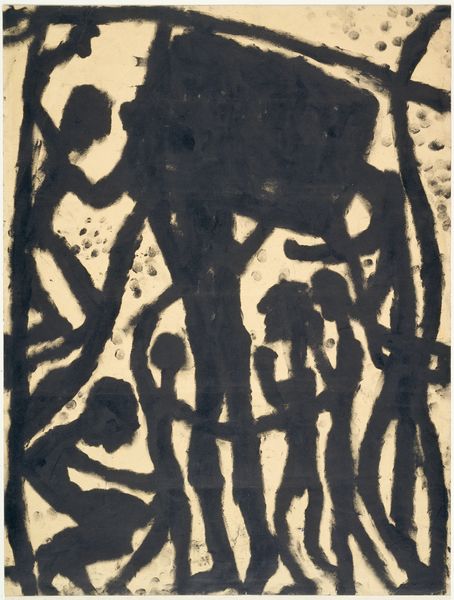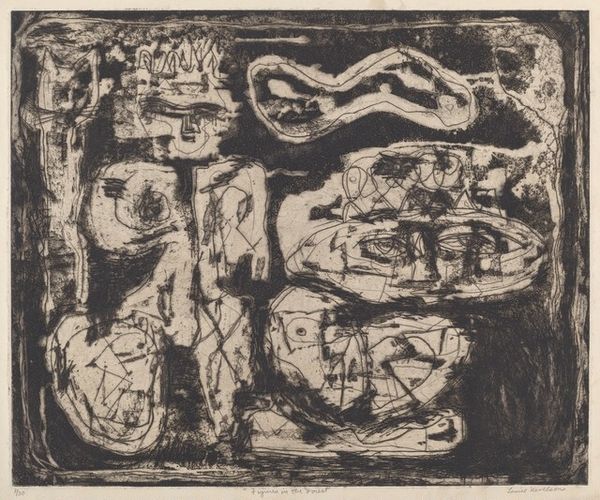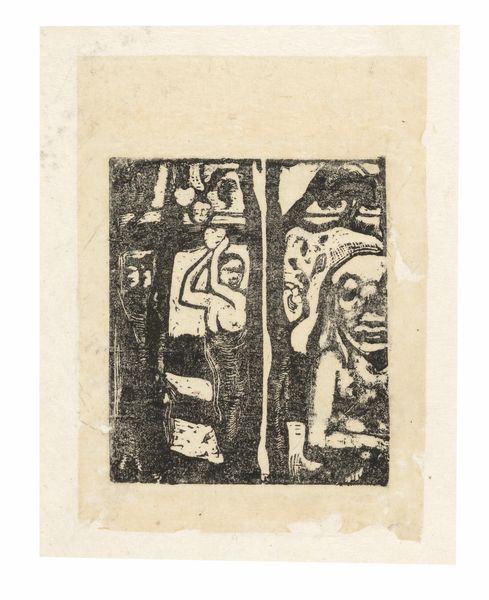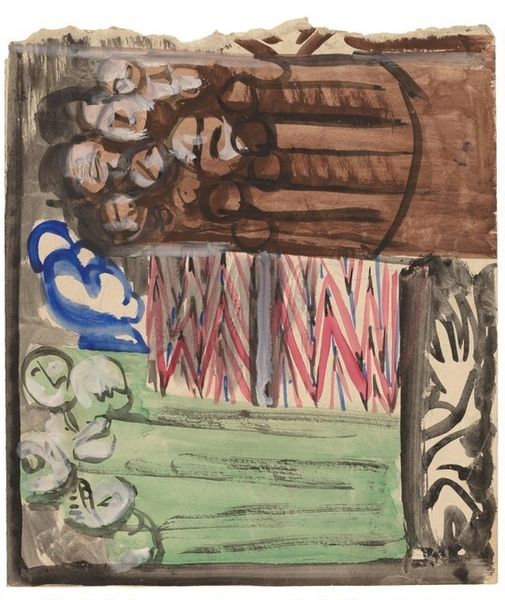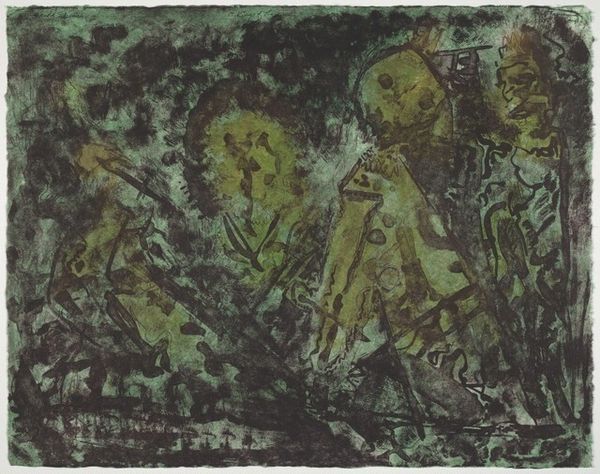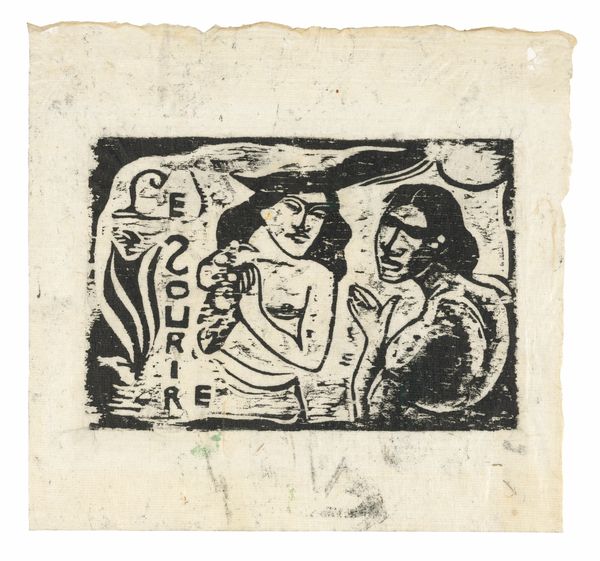
print, paper, ink, woodblock-print, woodcut
#
ink drawing
#
narrative-art
#
pen drawing
# print
#
figuration
#
paper
#
ink
#
woodblock-print
#
woodcut
#
symbolism
#
post-impressionism
Dimensions: 203 × 354 mm (image); 207 × 358 mm (sheet)
Copyright: Public Domain
Editor: So, this is Gauguin's "Te atua (The God), from the Noa Noa Suite," made between 1893 and 1894. It's a woodblock print in ink on paper. It strikes me as quite intense, almost overwhelming, with the dense composition and high contrast. What do you see in this piece? Curator: Immediately, the interplay of positive and negative space commands attention. Note how Gauguin employs bold lines to define forms, yet simultaneously flattens the picture plane, defying traditional perspective. This strategic ambiguity contributes to the work's symbolic potency, drawing the viewer into a realm beyond simple representation. How do you perceive the use of light and shadow within these compositional parameters? Editor: The way he's carved out the light creates halos and pools of focus, but everything is still very stark and blocky. There's not much blending of tone. Does that choice speak to the emotional tenor? Curator: Precisely. The deliberate manipulation of light serves not only to delineate forms but also to amplify the emotional resonance. This strategic simplification allows the formal elements—line, shape, and value—to communicate with heightened clarity and symbolic charge. Is the expressiveness heightened or diminished as a result of that intensity? Editor: I think it's definitely heightened. The figures feel monumental, even though it's a relatively small print. I can really see how the composition enhances the emotional weight. Thanks! Curator: Indeed. Examining how line, form, and space operate independently and collectively provides potent insights into the mechanics of meaning-making in visual art. A very profitable endeavor.
Comments
No comments
Be the first to comment and join the conversation on the ultimate creative platform.
